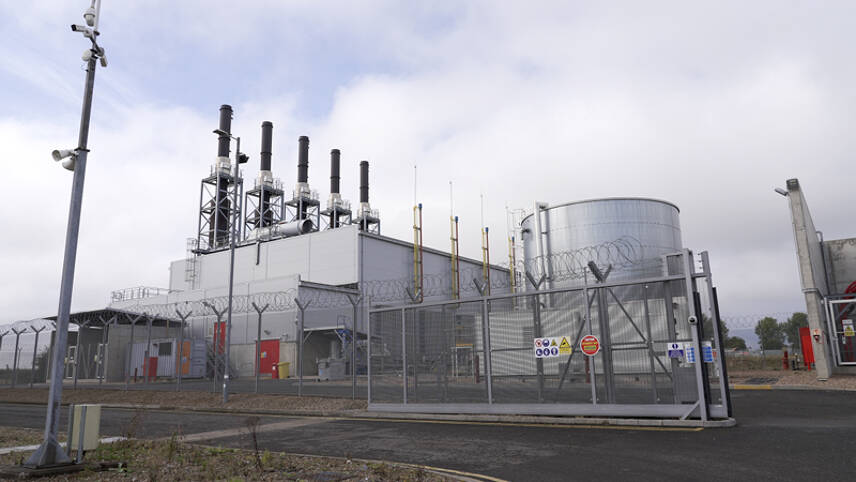Register for free and continue reading
Join our growing army of changemakers and get unlimited access to our premium content

The trials will begin at Brigg (pictured) in the third quarter of 2023
The energy major has forged a partnership with hydrogen producer HiiROC to deliver the trials, which are being partly funded by the Net Zero Technology Centre – an arm’s length body of the Scottish Government that invests in energy R&D. Centrica has increased its shareholding in HiiROC to 5% as part of the project and secured funding through the Net Zero Technology Centre’s Open Innovation Programme.
The trials will see a blend of up to 3% hydrogen used in the plant from the third quarter of 2023. During the trials, the plant’s performance and emissions will be assessed. After the project is complete, there are plans to incrementally increase the blend to 20%.
Because the 49MW plant is a peaking plant, it does not operate around the clock. Centrica has stated that it typically generates power for three hours a day or less, at times of peak demand and/or low generation from local renewables.
Hydrogen and net-zero
In the long-term, Centrica has stated that it will consider moving Brigg power station to 100% hydrogen if feasible, and replicating this transition across its other gas-fired peaking plants. This, it has stated, could decrease emissions from gas plants.
Hydrogen produces no greenhouse gas emissions at the point of combustion but, depending on the way it was produced, will come with embodied emissions from upstream. Most global hydrogen production at present is ‘grey’ (fossil-fuelled). The UK Government has an ambition for the nation to host at least 5GW of green (renewable) hydrogen production capacity by 2030 and to majorly scale up blue hydrogen (gas with carbon capture).
Centrica is in the process of converting its gas storage facility at Rough for hydrogen and anticipates completion by 2026. The plan to convert Rough feeds into Centrica’s overarching commitment to become a net-zero business by 2045. The business is also looking into blue hydrogen generation.
As for HiiROC, the hydrogen it supplies to Centrica will be gas-based but involve electrolysis. It describes the colour of its hydrogen as ‘emerald’. The production process involves splitting gas into hydrogen and carbon black.
Centrica Business Solutions’ managing director Greg McKenna said: “Gas still plays a huge role in maintaining a secure, stable supply of power in the UK, with around 40% of our power coming from natural gas. So, it’s vital that we find ways to reduce the carbon intensity of gas plants like that at Brigg.
“We’re delighted to get the grant funding from the Net Zero Technology Centre in order to explore the role of hydrogen in providing the low carbon backup power we’ll need in order to maintain the security of supply as more renewable energy comes on stream.”
edie’s Masters Series on hydrogen
Centrica Business Solutions and edie recently worked together to produce a ‘Masters’ series on hydrogen production and usage that will be invaluable to any firm exploring its plans for a hydrogen future. The content now available on the edie website as part of that series is:
- A free-to-download ‘edie Explains’ guide on hydrogen’s role in the net-zero transition, detailing key considerations for organisations of all sizes and key sectors.
- An exclusive episode of edie’s Sustainable Business Covered podcast, including a site tour of the H2H Saltend blue hydrogen production and use project.
- A 45-minute masterclass webinar, available to watch on-demand, featuring Centrica Business Solutions’ head of hydrogen William Mezzullo.


I think I may have commented before that hydrogen as a fuel, is unusual, in that it has be manufactured, it simply does not occur naturally, as a gas it all went long ago, gravity was just not good enough!
The only carbon free source of it is nuclear electricity, but that does not seem to get a mention. Carbon capture seems archaic, (even if profitable!)
Nuclear electricity could supply our baseload, reducing the call on methane, and leaving hydrogen to be used as a chemical in synthetic processes.
Where is this concept in error?
Richard Phillips